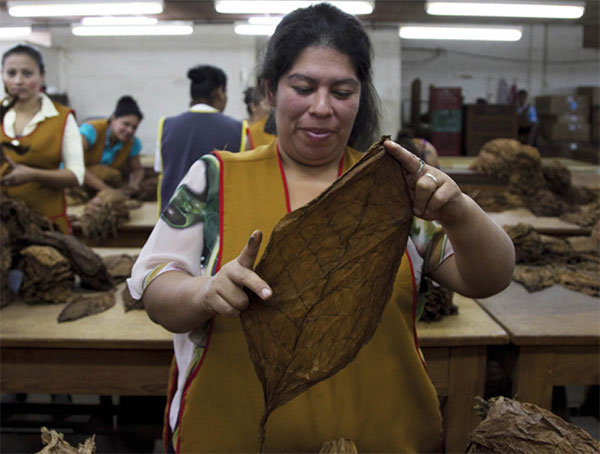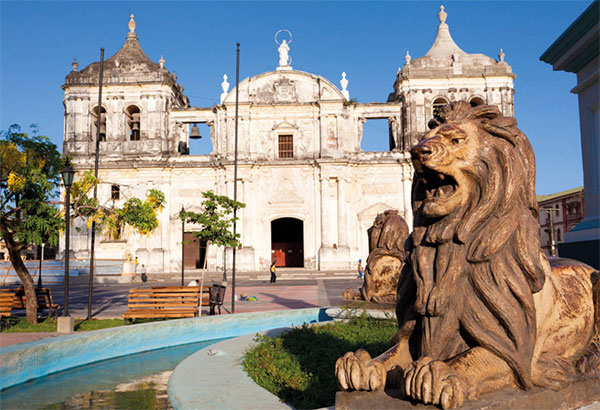A UNICYCLIST TURNED REVOLUTIONARY
A California-born engineering graduate named Benjamin Ernest Linder, inspired by the Sandinista Revolution, moved to Nicaragua in 1983 to help the country’s poor. After several years in Managua he moved to the northern highland town of El Cuá, in the middle of a war zone where the Sandinistas were fighting the US funded Contras. Linder helped build a hydroelectric plant, bringing electricity to the village of San José de Bocay, and launched vaccination campaigns against measles. However, Linder will always be remembered for his talents as a clown, who amidst the horrors of war, entertained the village children as he juggled and rode his unicycle.
In 1987, Linder and two Nicaraguan friends were ambushed by Contras while walking through the forest, an incident that raised international headlines, leading to questions about the US role in Nicaragua. Congress withdrew support for the war a year later. Linder is fondly remembered throughout the north as the juggling ambassador, with murals plastered around the region. President Ortega posthumously awarded him the country’s highest civilian honor and served as a pallbearer at his funeral. Numerous books and songs have been dedicated to Linder, including Sting’s Fragile on the 1987 album, …Nothing Like the Sun.
Roughly 30km (19 miles) northeast of Estelí is the Miraflor Cloudforest Reserve, notable for the tourist-friendly organic farming community that adjoins it. The reserve centers on a mountain lake ringed by primary forest that is transected by hiking trails to several waterfalls.
Tip
Every Saturday on the north side of León’s main plaza, Parque Juan José Quezada, a community fiesta called Tertulia Leonesa is held to showcase the best of the city’s cultural traditions. Micro-artisans sell traditional handicrafts and foods, while folkloric musicians and dancers perform for onlookers.
Ocotal
The Spanish began settling in what is the scenic Nueva Segovia region in 1534, though pirates sailing up the River Coco from the Caribbean in search of gold repeatedly attacked. The settlers moved to what is now Ocotal 5 [map] in 1654, quickly developing an important source of timber for the growing nation. In 1927, Augusto Sandino and his army seized the city in their first major blow to government forces, which resulted in a devastating air raid by the US marines. Today, the city of 47,000 is home to a lovely central plaza filled with tropical foliage, pine trees, and flowers, and sided by a neoclassical church.
The surrounding countryside, chock-full of cattle ranches and coffee fincas, makes for fine cycling and several tour agencies and hotels in town will rent bikes.

Working at a cigar factory in Estelí.
John Bustos/REX/Shutterstock
Southwest of Ocotal on the Pan-American Highway, not far from the Honduran border, is the Somoto Canyon, a rugged gorge with unusual rock formations.
León and around
Closer to the Pacific coast, near the Honduran border, León 6 [map] is the country’s second largest city with a population of 200,000. Founded in 1524 by Francisco Hernández de Córdoba, it was abandoned in 1610 after earthquakes turned much of it to rubble. The settlement was then moved about 30km (20 miles) east to where the present-day city now stands. Long the liberal and intellectual capital of the country, León was the political capital too from colonial times until the mid-1800s, when this title moved back and forth from more conservative Granada before finally landing in Managua. During the revolution the city was a stronghold of the Sandinistas, leading to a brutal backlash from the Somoza regime, which burned down the city’s central market.
The swelteringly hot lowland city has maintained its colonial core, with more than a dozen 18th-century churches, many of which are connected by underground tunnels once used to escape pirate attacks and now part of the sewer system. The colonial baroque Basilica Catedral de la Asuncion (Mon–Sat 8am–noon, 2–4pm; free) was built between 1747 and 1814 and is the largest cathedral in Central America. Having endured earthquakes and bombings, it has become a symbol of the city itself: proud and resilient. Within the crypts are the tombs of some of the most important figures in Nicaraguan history, such as the poets Rubén Darío and Salomón de la Selva, the father of independence Miguel Larreynaga, and composer José de la Cruz Mena.
Founded in 1639 by Friar Pedro de Zúñiga, the church and convent of San Francisco (hours vary; free), two blocks west of the plaza, is one of the oldest in the country. With its plateresque altars, courtyard lined with lemon trees, and porticoes covered in red bougainvillea, it’s one of the most attractive examples of Leónese colonial architecture. Dating to 1786, the Iglesia de la Recolección (hours vary; free), three blocks north of the plaza, features a Mexican Baroque facade and altarpieces. Opposite the cathedral is the Museo de la Revolucion (daily), dedicated to the Nicaraguan revolutionaries who stood up to the Somozas, while the Museo Rubén Darío (daily) is where the country’s favorite poet spent his first 14 years and is filled with various relics from his life. A block away, the Centro de Arte Fundación Ortíz-Gurdián (www.fundacionortizgurdian.org), set in two colonial houses, holds Nicaragua’s best art collection, with contemporary works of Nicaraguan painters and even works from Rembrandt and Picasso.
Outside of León
The ruins of the original León, a Unesco World Heritage Site known as León Viejo 7 [map] (daily 8am–5pm), were laid buried in ash from the 1610 eruption of the Momotombo Volcano. The ruins were lost for 300 years until the late 1960s; excavations have revealed brick walls and the general layout of the city, as well as the cathedral and plaza, with the headless remains of founder Francisco Hernández de Córdoba beneath it. The site can be visited on a day-long guided tour through any agency in León, such as Vapues (www.vapues.com), and are usually combined with a hike to the top of the Cerro Negro Volcano, with options for sandboarding down the black volcanic slopes.
On the coast, the Reserva Natural Isla Juan Venado, 18km (11 miles) long, is an uninhabited barrier island with wide, desolate beaches and mangrove forests in the interior reaches. Kayak trips through the canals can be arranged in León, as can turtle tours from July to December, when Olive Ridleys, leatherbacks, and other turtles arrive in their thousands to lay their eggs in El Vivero, close to Las Peñitas. Just north of Las Peñitas is Poneloya, the far north’s most popular beach destination. A fishing village with seafood restaurants fronting the beach, there are several small hotels here and there is a regular bus service from the Mercadito Subtiaba in León.

León’s cathedral is the largest in the region.
iStock